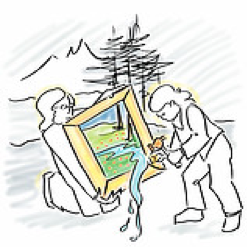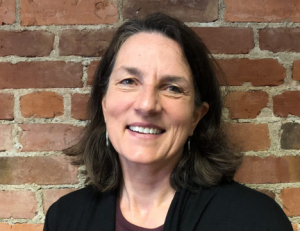By Nedra Chandler for EDRBlog.org
 People, conflict situations or other messy public decisions are always ready for something. The overarching questions are ‘what’ and ‘how.’
People, conflict situations or other messy public decisions are always ready for something. The overarching questions are ‘what’ and ‘how.’
“What are they ready for?” and “how do people — and their governments and their organizations — engage with the specific issues, and with each other, now, and next?”
Here is an invitation to carry out readiness checks more frequently and reap the benefits. We have included a sample scope of work for your readiness checking team.
Situation assessments are commonly recommended in our field as a way to help people discover where they can go next with a public policy, or public decision that is somehow stuck or has become a mess. The purpose is to reflect back the substantive, procedural and relational themes that arise from one-on-one or small group interviews.
Get notified when new articles are posted to the EDR blog – sign up for our email list »
The resulting themes and potential next moves may be delivered verbally, or on a few pages, or in a visual map or chart. Readiness checks, are one way to hold up a mirror and let people notice the scene, look down from the balcony as it were, at the situation they are in, so that they can make a near-term decision about how they prefer to be engaged, or not.
At the EDR Program, we have taken to calling situation assessments “readiness checking.” The process is usually time-limited to a few weeks or no more than 90 days to keep momentum and be relevant. Readiness checking is about putting aside assumptions and approaching a situation with a beginner’s mind. It’s asking questions with curiosity to discover what is going on, what matters to the people involved in the situation, and assisting the potential participants to prepare a deliberate path forward. On the internal side, we use a similar approach for discerning what may be ripe to carry out with government leaders and teams, but that is another blog post for another time.
Why do a readiness check?
Sometimes we humans over invest in trying to collaborate when the situation is not ripe, not ready for collaboration. We similarly sink time, energy and resources in collaborative efforts that are not well-framed or effectively structured, which can lead to burn out and losing faith in the potential of collaboration. And, because the sponsors of consensus building or collaborative processes are often government entities, such misuse and overuse can contribute to lower trust in government and in ourselves.
On the flip side, we might inaccurately assume that a situation isn’t ready for collaboration or that it doesn’t need it, which can lead to frustration as issues don’t get addressed and people don’t sense they’ve been seen, heard, or considered. Readiness checking is a focused process that may help all parties clarify a path forward.
As one of the participants in our current Short Course on Effective Natural Resources Collaboration professional training said, “this situation assessment approach (a.k.a., readiness checking) is especially useful. In my agency, the usual expectation is that we are out there ‘collaborating’ on everything with everyone. I like it that there are ways to narrow the universe of what’s ready for collaboration and what’s not.”
Readiness checking serves a number of other related purposes. Carried out with care, readiness checking conversations can enable co-learning and relational glue. It helps people, through conversations, discover for themselves a range of paths that may be available to them. This should usually include an alternative path of pausing or ‘staying still’ (akin to the ‘No Action’ alternative in National Environmental Policy Act documents) or perhaps moving forward with public engagement, collaboration, maybe a negotiated rulemaking, consensus building, or other devised process.

‘Readiness checking’ and ‘framing’ are what they sound like: go listen, then if feasible, choose a set up that has the best chance to serve the participants so they can accomplish something specific and meaningful together. Or one result of readiness checking is to shed light on how a forum or process is not feasible to convene at this time.
How does one accomplish a readiness check? Like so many things, it all starts with good questions and conversations.
Readiness Checker Reduced to 5 Time-Limited, Flexible Steps
- Formulate a set of questions specific to the situation. For example, what is working, and what is not? What is the situation most ready for now and next as you see it? Is there a compelling issue of mutual concern, opportunity, challenge, or vision of the future?
- Identify a diverse contact list of people with a stake in the process and the results. Talk with them using the questions developed in step one above. At the end, ask them, who else do you hope we could reach in the next (x) days to have this same kind of conversation? Maybe also ask them “is there anything else you think I need to know to understand this situation or what matters to you and your organization?” You might be surprised by what people share in response to that question!
- Listen to learn about substance, relationships, and process, rather than listening to fix. Listen more, talk (a lot) less. Ask them to tell you more, allow for quiet to let people reflect before they speak, stay in discovery mode. Go back to your team of readiness checkers and look for themes in the responses you have collected, common threads. Summarize what you collected in confidence without attribution to any party. Maybe one or more key parties have a better option than to collaborate (e.g., walk away, litigate, block, or some other unilateral path). Ask. Perhaps that will help some of the parties become more realistic about their options to get their main needs met.
- Check the themes for accuracy and sense of direction by going back to everyone you interviewed, preferably in a joint call or meeting to ask, “is this an accurate version of what you said? Do you see your views represented here?” Best not to get too hung up on orthodoxy about these readiness checks. Also, you can be creative about the form the readiness check takes — could be a page, 15 pages, or much longer. It could be delivered only verbally, and/or with a visual map that sums up what people said. Notice that one result of a readiness check can be a group’s first working agreement on the process, the frame in which to move forward with some defined set of issues at stake. Can the issue be clearly defined? If people cannot describe and frame the issue, then it is probably not ripe.
- Turn toward collaboration only where, and if, the readiness checking points in that direction. Remember to check in with participants themselves, asking them: what will support your active participation? Who would be credible as a conduit and ambassador to others who share that interest? How will you build a common base of information from which to work? What sources of information will be credible in what contexts? What conditions need to be in place in order to move forward with this? Who or what group might most helpfully support the facilitation of the collaborative work moving forward?
Repeat from Step 1 as needed in the months or years ahead. Each readiness check is about preparing the path for the next deliberate phase of work. Remember people change, situations shift, we must accept this.
We call it the ‘art and science’ of readiness checking because there is no strict orthodoxy about these steps that may take 2 weeks to 90 days or more. For every rule there is an exception. It’s serial readiness checking, and it’s improvisational. It takes what it takes.
We suggest you do not pass the first ‘go’ until you do some deliberate version of checking for readiness. It may be rapid. It will be imperfect. And you won’t get to check in with everybody in the universe. Do some kind of readiness check anyway, and help participants discover for themselves where they take the situation and their working relationships and/or policies next.
Here is the thing: people, conflict situations or other messy public decisions are always ready for something, the overarching questions are ‘what’ and ‘how.’
 Nedra Chandler is the associate director of the Stegner Center’s Environmental Dispute Resolution Program. Since 1990 she has mediated or facilitated more than 300 complex environmental and public policy conflicts in the western U.S. and nationally. She has a Master of Arts in geography from the University of Washington and a graduate certificate in public health from University of Montana. Nedra is a credentialed Associate Certified Coach through the International Coach Federation; a mediator on the U.S. Institute for Environmental Conflict Resolution’s National Roster of Conflict Resolution Professionals and Native Network; and a seasoned third-party workshop designer and facili-trainer.
Nedra Chandler is the associate director of the Stegner Center’s Environmental Dispute Resolution Program. Since 1990 she has mediated or facilitated more than 300 complex environmental and public policy conflicts in the western U.S. and nationally. She has a Master of Arts in geography from the University of Washington and a graduate certificate in public health from University of Montana. Nedra is a credentialed Associate Certified Coach through the International Coach Federation; a mediator on the U.S. Institute for Environmental Conflict Resolution’s National Roster of Conflict Resolution Professionals and Native Network; and a seasoned third-party workshop designer and facili-trainer.
